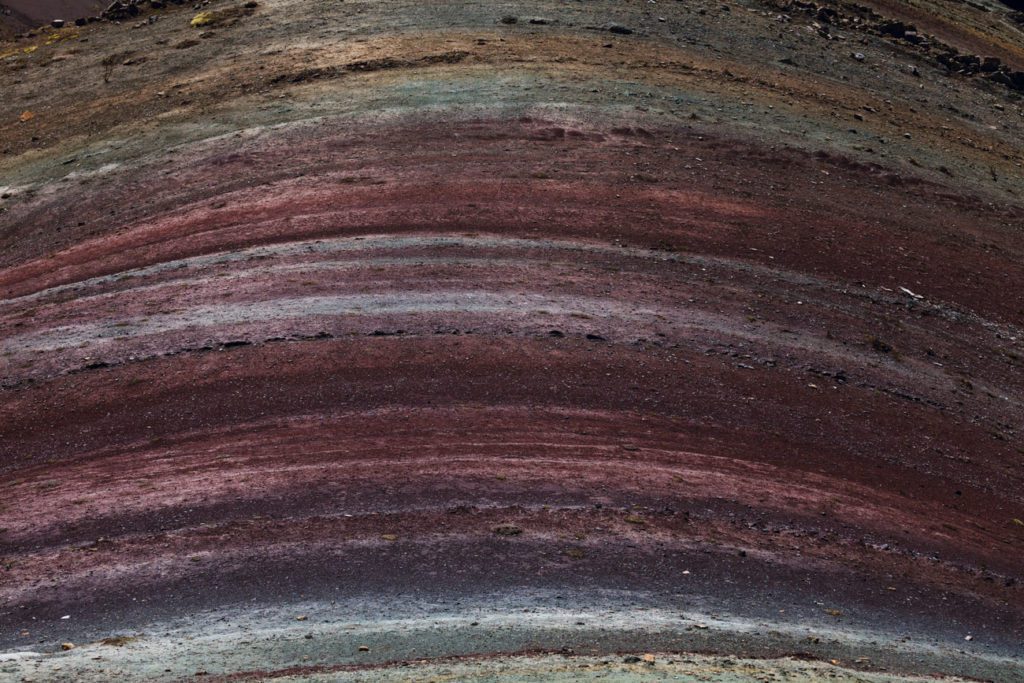Francesca Piqueras
Francesca Piqueras’s (b. 1969) photographs explore the profound influence of humanity on the natural world, capturing the calculated transformation of landscapes across the globe. Her striking images—ranging from jagged, snow-covered mountains in Italy to waves cresting against oil rigs in South America and massive torrents of water bursting through dams in China—offer a complex visual testament to the ways in which human ambition reshapes the environment.
Engaging with themes central to the Anthropocene, Piqueras reflects on the ecological consequences of industrial activity and economic pursuits. Her lens captures not only the extractive processes that alter Earth’s topography but also the haunting remnants of human intervention. In her work, forms born from organic materials—such as ships or industrial infrastructure—are shown in stages of erosion, abandonment, or decay. These images function like a photographic essay, offering a poetic meditation on the cycles of construction and entropy. In one such scene, a rusted cargo vessel lies marooned on the shores of Patagonia, slowly reclaimed by the sea—a powerful metaphor for nature’s ability to undo our attempts at control.
Raised in a family immersed in the arts, Piqueras was surrounded by figures like Marcel Duchamp, Man Ray, and Salvador Dalí during summers in Cadaqués. This early exposure to creative giants cultivated in her a quiet attentiveness and visual sensitivity. At thirteen, she discovered a passion for video and received her first camera. She later studied art history and cinema, working professionally as a film editor while continuing to nurture her love for photography.
Piqueras debuted her black-and-white photographs in 2007, focusing initially on urban environments and the subtle imprints of human presence. Heavily influenced by Michelangelo Antonioni’s Il Deserto Rosso, she soon turned her attention to the industrial landscape, seeking out the traces of civilization’s vast machinery. In 2011, she began working in color, unveiling The Architecture of the Absence, a series shot at ship dismantling sites in Bangladesh. This was followed by The Architecture of Silence in 2012, featuring scuttled freighters in Mauritania. Her more recent projects include a focus on fire and iron smelting, continuing her exploration of the four elemental forces—Earth, Water, Air, and Fire—that underpin the transformation of matter and meaning in her work.
Her photographs have been exhibited widely and are held in the permanent collections of institutions such as the Eretz Israel Museum in Tel Aviv, the Palazzo Ducale di Massa in Italy, and the Beijing World Art Museum in China.
Photography & Works
-

Francesca Piqueras
Andes 1 Add to cart -

Francesca Piqueras
Andes 2 Add to cart -

Francesca Piqueras
Andes 3 Add to cart -

Francesca Piqueras
Andes 4 Add to cart -

Francesca Piqueras
Andes 5 Add to cart -

Francesca Piqueras
Andes 6 Add to cart -

Francesca Piqueras
Andes 7 Add to cart -

Francesca Piqueras
Andes 8 Add to cart -

Francesca Piqueras
Dune 1 Add to cart -

Francesca Piqueras
Dune 10 Add to cart -

Francesca Piqueras
Dune 11 Add to cart -

Francesca Piqueras
Dune 12 Add to cart -

Francesca Piqueras
Dune 2 Add to cart -

Francesca Piqueras
Dune 3 Add to cart -

Francesca Piqueras
Dune 4 Add to cart -

Francesca Piqueras
Dune 5 Add to cart -

Francesca Piqueras
Dune 6 Add to cart -

Francesca Piqueras
Dune 7 Add to cart -

Francesca Piqueras
Dune 8 Add to cart -

Francesca Piqueras
Dune 9 Add to cart -

Francesca Piqueras
Mar 1 Add to cart -

Francesca Piqueras
Mar 2 Add to cart -

Francesca Piqueras
Mar 3 Add to cart -

Francesca Piqueras
Mar 4 Add to cart
News & Articles

Red, Yellow, Blue and All the Colors in Between: A Photographic Survey of Color and Form

Simple Pleasures: The Quiet Glow

Francesca Piqueras on Man and Nature

Beyond The Horizon: The Changing Global Ecology

Planet Earth

Dialogues With Great Photographers – Francesca Piqueras



